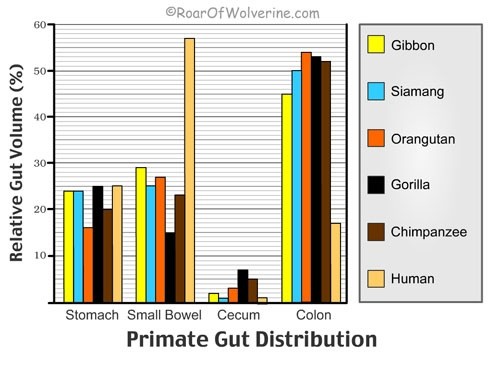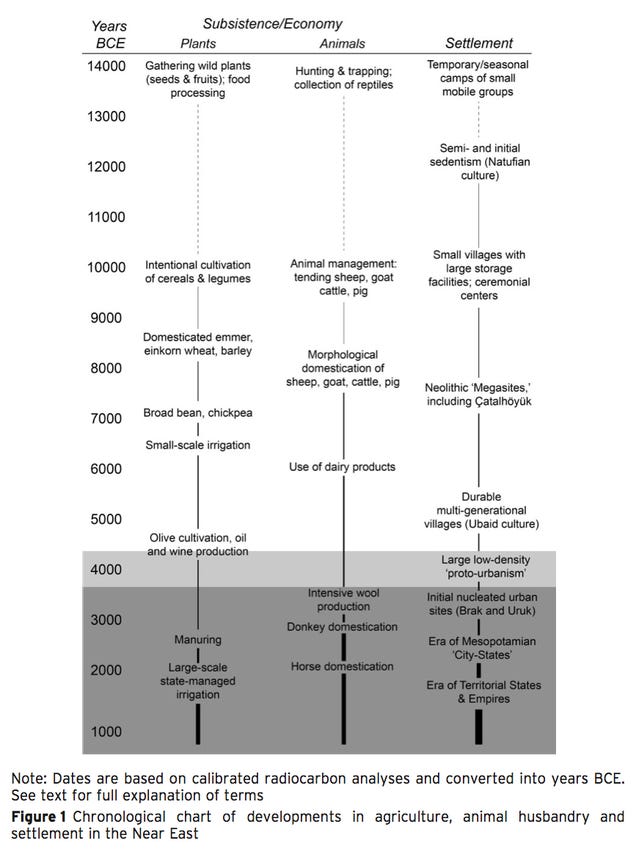

Velika razlika u volumenu tankog i debelog crijeva između čimpanzi i ljudi
In humans compared to primates, the gut is reorganized. The size of the colon is much reduced and the size of the small intestine is increased. The human colon takes up 17-23% of the digestive tract. In chimpanzees, orangutans, and gorillas it occupies 52-54%. Instead of a large colon, humans have a small intestine that represents 56-67% of the gut. These are important to note because of their role in digesting food. The small intestine is where primate enzymes digest and absorb nutrients immediately available in food. In contrast, the colon can be thought of as a bioreactor, where bacteria digest otherwise useless dietary constituents into important nutrients and other chemical byproducts. These include short-chain fatty acids (SCFA), organic fatty acids with 1-6 carbon atoms created by the fermentation of polysaccharides, oligosaccharides, protein, peptides, and glycoprotein precursors in the colon. The major source of these in primates is through the fermentation of fiber and some types of starch. The major difference in this matter between humans and the other great apes is that apes such as the gorilla are able to use their larger colons to obtain as much as 60% of their caloric intake from SCFA alone.
